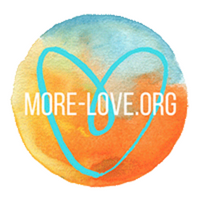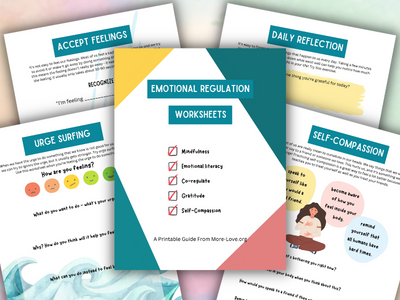
by Kortney Karnok
I feel like I have lived my whole life in the framework of having an eating disorder. It was my identity above all else. It was a label I started to identify with as a 14-year-old, after my first real “diet.” My mom was a chronic dieter, and it seemed like the natural thing to do. We even had a bathroom scale in the kitchen!
My parents did their best to help me. I attended three different inpatient treatment centers and was sent to various therapists and outpatient treatment programs. My parents were desperate to help. They paid for treatment and supported me and just wanted me well.
How I recovered
I don’t think I went a single year without an eating disorder relapse until recently. The biggest thing leading to a full and committed recovery for me finally was a complete reconditioning of my beliefs and values system around appearance and self-worth, specifically body size. But it really took a long time. And is probably still a work in progress. The introduction to feminist theory, Health at Every SizeⓇ, and Intuitive Eating were really the catalysts that solidified my perspective and recovery. Finally.
Emotional Regulation Worksheets
Give these printable worksheets to grow more confident, calm and resilient and feel better, fast!
- Self-Esteem
- Self-Regulation
- Mindfulness
- Calming strategies
What I see in the fitness industry
There’s still a lot of dietary dogma floating around in gyms. Everyone needs their diet belief systems to cling to, and I get it, it’s how we’ve all been conditioned. It’s impossible to avoid. But I wish it wasn’t so, and I’m working on changing the conversation. I’m hoping to incorporate some programs for body image/body acceptance, and possibly an introduction to the principles of Intuitive Eating in the future.
What I’d like to see in the fitness industry
I’d like to see more larger bodied people portrayed as successfully engaged in fitness, athletics, movement, dance, whatever activity, etc. Let’s see the larger bodied people enjoying movement! I think it would illustrate to all people in all bodies that fitness and health is accessible to all types, and it’s not about weight. It’s about enhancing the quality of life – whatever that looks like to every individual.
I’d love to smash the lean fitness ideal.
What I’ve noticed about bodies at the gym
Most people are not happy with their bodies, particularly their stomachs. I work with a lot of moms in this situation. So many moms come to the gym and are distraught about their bodies. I recommend a list of people to follow on Instagram so they can see the diversity of healthy body types in the world. I think it takes a lot of time and focus and commitment to undo the social conditioning about weight stigma and fatphobia.
My gym rule is that you should never speak badly about your body or any body. Do not admire lean, ripped bodies in the gym as if that is superior to other types of bodies. Do not shame people for eating treats or admire others for being so “good” for eating “healthy.” These behaviors are all really common at the gym but are also really unhealthy.
How I talk to people about bodies
When people talk about their bodies, I try to redirect them to thinking positively about their capabilities. Most of the clients I’m working with are able-bodied and in relatively good health. They’ve just been conditioned to dislike aspects of their bodies.
I try to deemphasize body weight and weight loss and diet talk and redirect negative body talk to appreciation if possible. I try to draw the focus to the amazing things women’s bodies have done, like grow babies! I admire moms for their strength and try to encourage them to see that, rather than their “flaws.”
Any time someone expresses a negative body comment, my easy go-to is to get them to acknowledge something awesome they just did. “Yeah, but didn’t you just do 20 pushups like a badass?! Yeah, thought so. That body’s not so bad after all!”
Emotional Regulation Worksheets
Give these printable worksheets to grow more confident, calm and resilient and feel better, fast!
- Self-Esteem
- Self-Regulation
- Mindfulness
- Calming strategies
What I tell parents about their kids’ bodies
My clients often talk to me about their kids’ bodies. I try to emphasize focusing on letting kids have fun with moving and learning new skills. I’m pretty direct about how food shaming and policing kids about their food habits (or their bodies) can be a recipe for eating disorders.
I have had several distressed parents confide in me about troubling eating behaviors with their kids. It’s clearly a challenge for parents, especially parents who have children living in larger bodies. I steer parents towards HAESⓇ resources and professionals who may be able to support a body positive approach to the family’s eating behavior rather than keeping the focus on one individual’s body and/or behavior.
What fitness is good for … and what not to do
Fitness can promote positive self-esteem, mental health, accomplishment, and overall wellbeing. However, it should be fun and not forced. And, for the love of God, please do not make it about weight control, weight loss, or building muscles.

Kortney Karnok is a body positive Crossfit coach and soon-to-be certified Intuitive Eating Counselor living in Beloit, Wisconsin. Her online coaching business “Fueling Strength” helps women find their way out of diet culture, food, body, and exercise obsession. You can follow her on Facebook and Instagram.


The work you’re doing is so important! Thank you for sharing your approach.
Thank you so much! That means a lot to us!